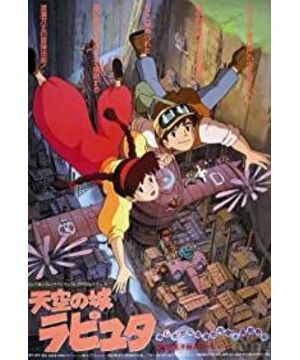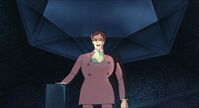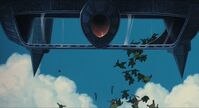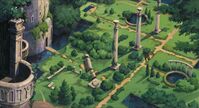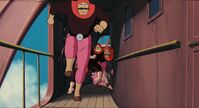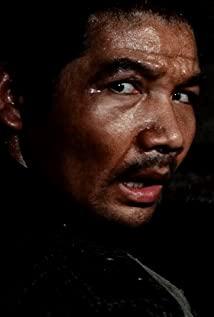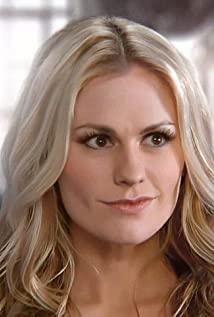1985, Studio Ghibli (Studio Ghibli, Ghibli is near the Mediterranean Sea) A whirlwind name) founded by Hayao Miyazaki and Isao Takahata, the small studio has the best production staff, but the tone of the studio is somewhat anti-commercial. In such an environment, Studio Ghibli began to produce "City in the Sky".
Castle in the Sky is a famous representative of Hayao Miyazaki's early works. It is also the pioneering work after the establishment of Studio Ghibli. It is certainly appropriate to analyze it as a case study of Hayao Miyazaki's early works:
whether it is "The Valley of the Wind", "Porcupine" or "The Witch's Delivery Service" - or even this "Castle in the Sky" - Hayao Miyazaki Most of the films feature flashy flying moves, and almost all of the protagonists think the sky is where dreams come true. And "Castle in the Sky" is Hayao Miyazaki's dream of flying at the beginning and it is also an extreme presentation - relatively speaking, the flight of "Nausicaa" is the need for war, the flight of "Porcupine" is an escape from the world, and the "Witch's Delivery Service" "The flight itself is an ability, it doesn't matter whether it is a dream or not-and the various aircrafts in "City in the Sky" and the core of the real "flight" contained in "Looking for Laputa, the City in the Sky", constitute It created the atmosphere of "City in the Sky" that most entrusted the memory of dreams.
The film is a film adaptation of the novel "Gulliver's Travels" written by Jonathan Swift. The main story frame is as follows: the
little girl Rushta is a descendant of the legendary "Sky City Laputa", and the airship she is sitting in is attacked by air pirates. During the battle, Rushta fell from the airship at a height of 10,000 meters... and was rescued by the other protagonist of the story, the boy PASU. But pirates with a keen sense of smell soon came to the door. The two were caught by soldiers of the army during their escape. In order to avoid the ability of Sky City to be used by the bad guys, Bass and Rushta embark on an adventure, and finally stop the bad guys from trying to rule the world.
The story itself did not deviate from the old-fashioned theme of "saving the world" that often appeared in animation stories at the time, but still retained the shadow of heroism and the focus on the big theme of "humanity". However, "City in the Sky" is full of many attractive elements. The film almost perfectly depicts the world landscape of the era in which the story takes place, with a bit of sci-fi (aircraft of all kinds) and a bit of myth (city in the sky). The most gratifying thing is that the work has a taste of the European Industrial Revolution. , such as old-fashioned trains on elevated railway tracks, dark mines, airships, robots like clay sculptures, etc... This work can even be said to be the beginning of the Japanese animation industry's love for the industrial age - this This kind of Western Industrial Revolution complex can be described to the extreme in "Steamboy", which can be regarded as a tribute to Hayao Miyazaki by other Japanese animation workers.
"City in the Sky" is full of intense plots, but the blue sky and thick white clouds make the sharp conflict more intriguing - especially the morning after Rushta was rescued by Bass. When the trumpet was blowing on the roof, the overlooked town scenery suddenly came into the mirror. This momentary quiet scene gives people a deep attachment and yearning. There are many such warm scenes in the play: for example, Bass and Rushta stand on the top of the airship and watch the starry night; for example, the robot left behind in the city in the sky removes Bass and Rushta The aircraft that was pressed on the bird's nest when it fell... and the lonely back of the robot that stayed behind, the flowers it placed in front of the tombstone, the flower it picked for Rushta... and after the humans left, has been watching over the loneliness of the city and the tomb.
Dream is the dominant theme in Hayao Miyazaki in the early days: the dream of the young Buss is to find the city in the sky - he did it, and also gained the experience of friendship and adventure, and went through the test together with Rushta, and walked together The future life; Grandpa Tom in the mine is a character who is on the scene, but in almost every work of Hayao Miyazaki, there will be such a kind character who has a clear and thorough understanding of life and nature, and gives the protagonist Guidance for life. Grandpa Tom listening to the sound of the stone in the dark...isn't it a beautiful, dream-seeking gesture? And the dream of the pirates is to harvest wealth - naturally, the dream of pirates is also a dream, and the dream does not matter noble or vulgar - what's more, this group of pirates is so cute, in the process of getting along with Bass and Rushta, gradually It shows their kind nature... It's because of this that Miyazaki is willing to let them get a lot of wealth in the end, right?
Most of Miyazaki's works are about the growth of girls. Although boys also appear, girls are obviously the most important role. However, those boys often leave a clear impression on us—the simple and enthusiastic appearance of these teenagers, isn’t that what we used to be? It’s just that in the process of being infiltrated by society, we gradually lose our enthusiasm and hope for life and ideals as if it were inevitable. This is one of the reasons why Miyazaki's works are so popular. Beneath its childlike and lively appearance, there is always a strong core and a caring heart. All of Miyazaki's works are constantly discussing the power of the mind and the power of personality. Therefore, in "City in the Sky", Rushta's spiritual power finally defeated Muska's guns. And the sentence that Rushta said "...I understand why the city in the sky will decline, because no matter how high the technology is, as long as people are separated from the land, people can't live", it is Miyazaki Hayao's belief that gave birth to life A soulful compliment to the civilized earth. It is also a kind of antipathy to a highly developed society in which people's hearts are gradually violated by material things.
"City in the Sky" is still a bit jerky in the editing, but the music is full. Hayao Miyazaki's musical partner Joe Hisaishi established himself as the first master in the Japanese film soundtrack industry with this film, and this collaboration is also the pinnacle of Joe Hisaishi's soundtrack career.
View more about Castle in the Sky reviews


